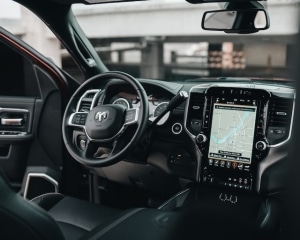Leveraging Computer Diagnostics for Accurate Repairs
 In today’s world of advanced technology, even our cars come equipped with intricate computer systems. When something goes amiss, these systems help pinpoint the issue. Computer diagnostics have revolutionized the way mechanics approach car repairs, ensuring accuracy and efficiency. Let’s explore how this tech-savvy method is making waves in the automotive world.
In today’s world of advanced technology, even our cars come equipped with intricate computer systems. When something goes amiss, these systems help pinpoint the issue. Computer diagnostics have revolutionized the way mechanics approach car repairs, ensuring accuracy and efficiency. Let’s explore how this tech-savvy method is making waves in the automotive world.
The Rise of Automotive Computer Systems
The modern vehicle is a marvel of technological integration. Beneath the hood, apart from the traditional mechanical parts, lies a sophisticated network of sensors, microcontrollers, and modules, all communicating to ensure optimal performance.
Monitoring in Real-Time: These systems constantly monitor various parameters, from engine temperature to oxygen levels in the exhaust.
Warning the Driver: Ever seen a warning light pop up on your dashboard? That’s the car’s computer letting you know of potential issues.
The Power of Computer Diagnostics
Gone are the days when mechanics solely relied on manual inspections and educated guesses. With computer diagnostics:
- Swift Problem Identification: By simply plugging in a diagnostic tool, mechanics can read error codes and understand the root of the problem within minutes.
- Comprehensive Analysis: Modern diagnostic tools provide a holistic view, monitoring everything from the engine and transmission to the brakes and fuel system.
- Accurate Repairs: With precise identification, the chances of misdiagnoses are drastically reduced. This means fewer return trips to the repair shop.
- Cost-Efficiency: Accurate problem detection means you only pay for the repairs you need, saving both time and money.
How Does a Computer Diagnostic Work?
The magic lies in the On-Board Diagnostics (OBD) system, a universal protocol present in most cars post-1996.
Connecting the Tool: The mechanic connects a diagnostic scanner to the car’s OBD port, usually located beneath the dashboard.
Reading the Codes: Once connected, the tool reads error codes sent by the car’s computer. These codes correlate with specific issues.
Interpreting and Repairing: Using the codes as a guide, the mechanic can then address the root problem, be it a faulty sensor or a more complex engine issue.
Embracing the Future: The Importance of Regular Scans
While computer diagnostics are instrumental when problems arise, they’re also invaluable for preventative maintenance.
Routine Checks: Even without glaring issues, it’s wise to get a diagnostic scan during regular service intervals. Hidden problems might lurk beneath the surface.
Early Problem Detection: Detecting and rectifying small problems early on can prevent larger, more expensive issues down the road.
The Intersection of Technology and Mechanics
As vehicles become more technologically advanced, the tools and methods we use to maintain and repair them must evolve as well. Computer diagnostics bridge the gap between the digital and mechanical worlds, ensuring our rides remain smooth and our repair bills remain reasonable.
Are you a fan of leveraging tech in car repairs, or do you have an interesting diagnostic story to share? We’d love to hear from you in the comments. Drive safe, and may your check engine light forever remain dormant!
